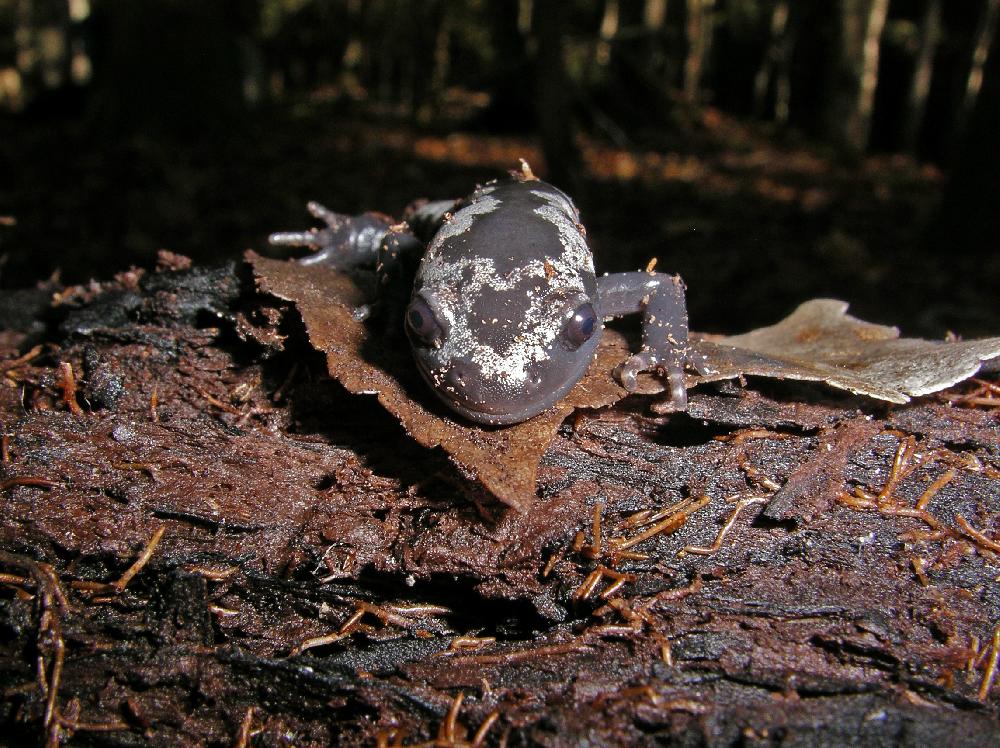In Case You Didn't Know ...Mole salamanders may live 10-15 or more years! Mole salamanders are terrestrial, and are identified by having wide, protruding eyes, prominent costal grooves, and relatively thick arms.
The adults of this family spend most of their time in holes and burrows created by themselves or by other burrowers.
Female mole salamanders lay large clumps of eggs in water. Young (larvae) hatch out and breath underwater using 3 pairs of external gills. These dissappear as the young animals metamorphose into the adult land-dwelling form.
Adults are opportunistic feeders, willingly consuming any available invertebrate they find.
Dodd, C. Kenneth. 2004. The Amphibians of Great Smoky Mountains National Park. The University of Tennessee Press, Knoxville, Tennessee.
Dodd, C. Kenneth. 2003. Monitoring Amphibians in Great Smoky Mountains National Park. U.S. Geological Survey circular; 1258.



